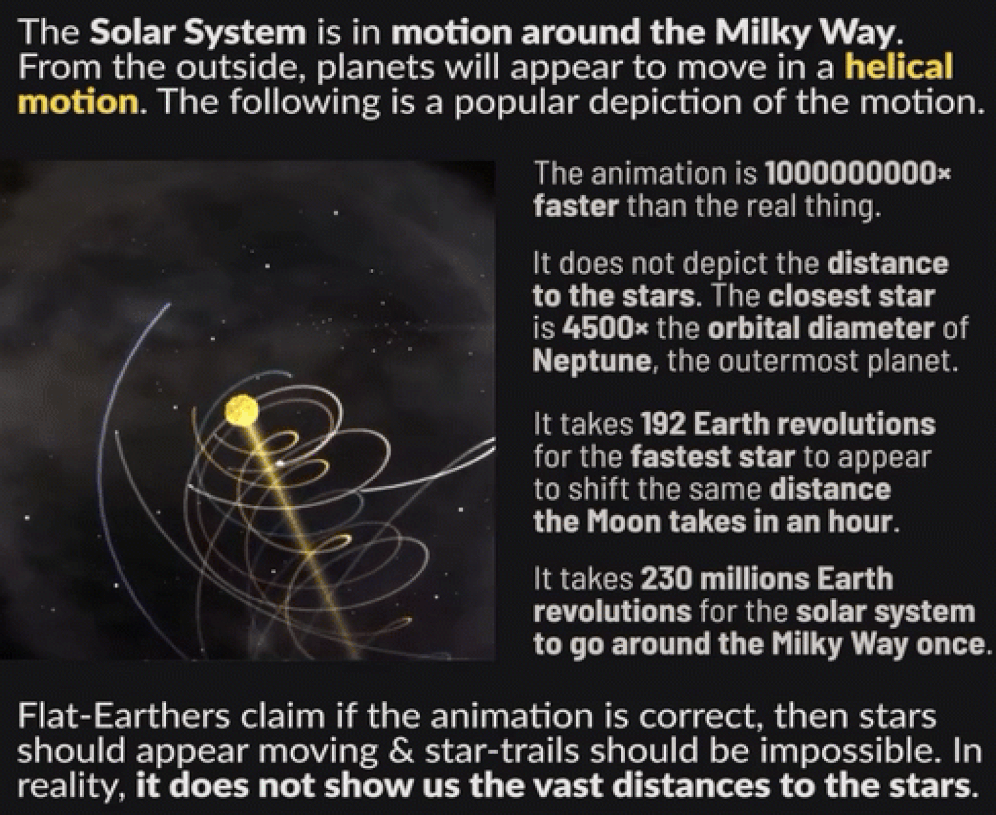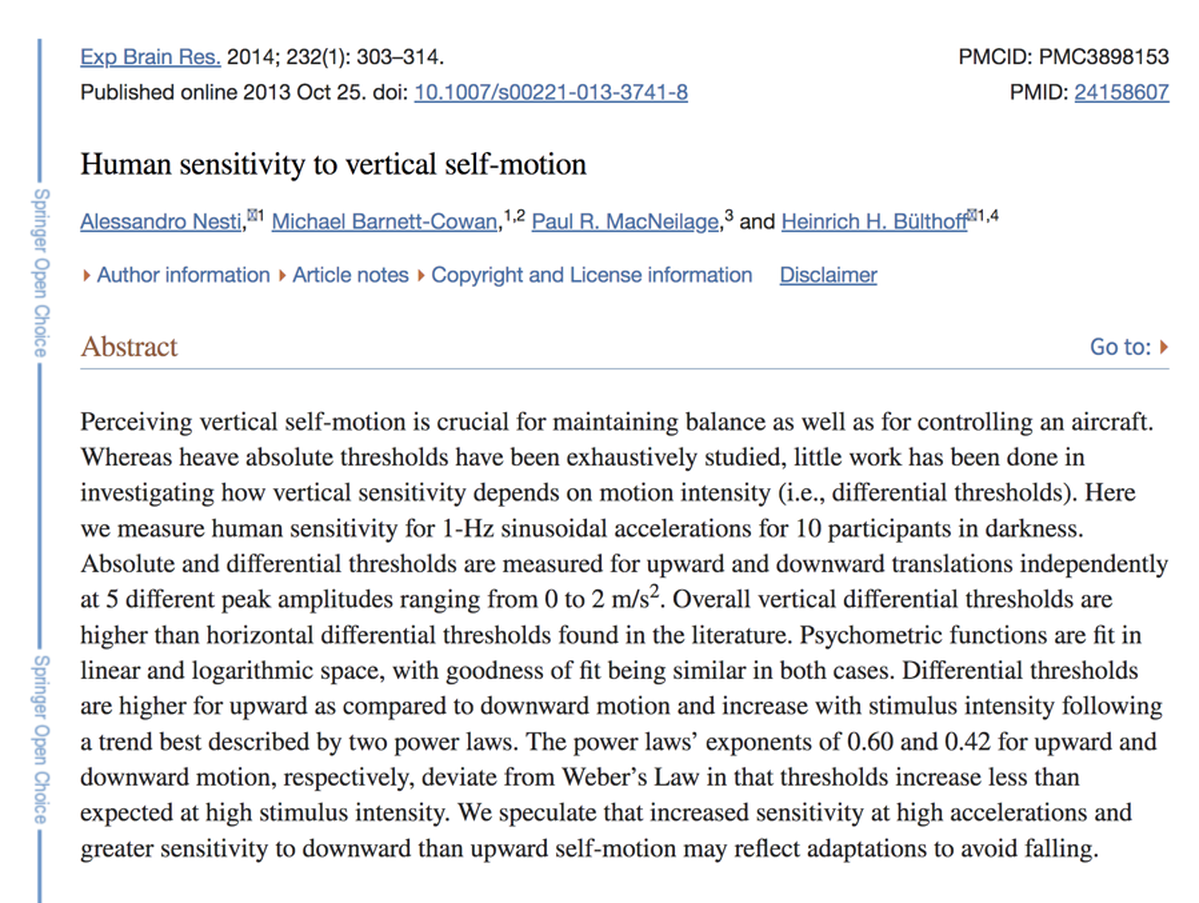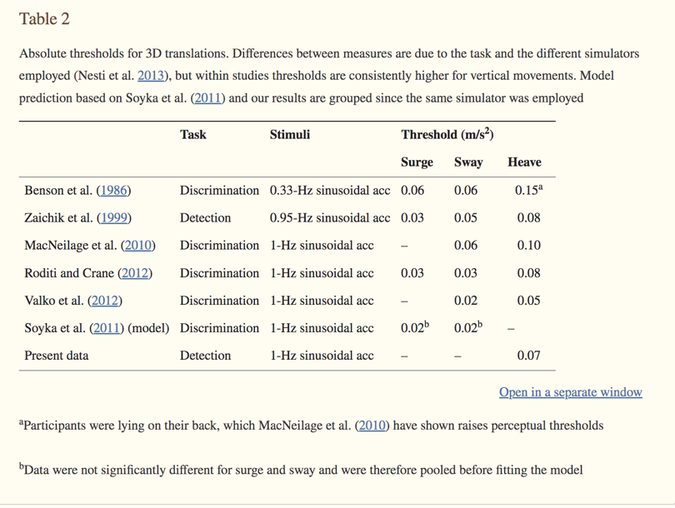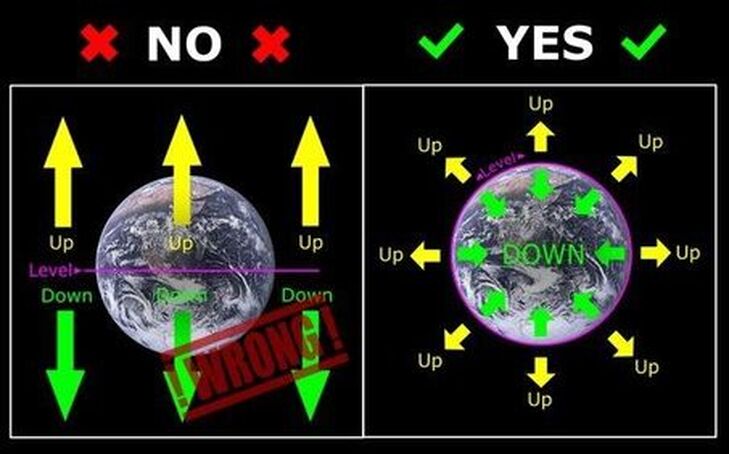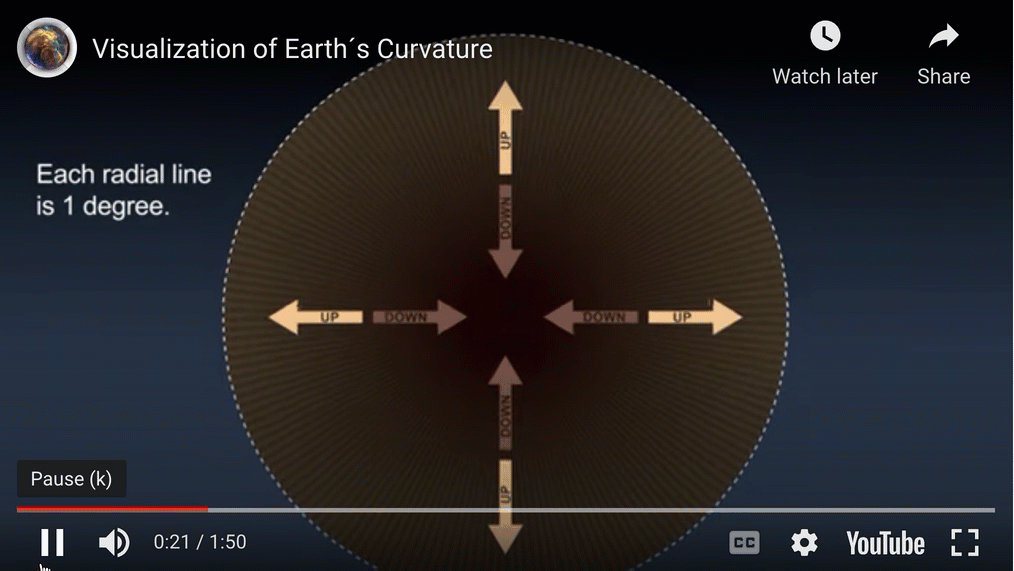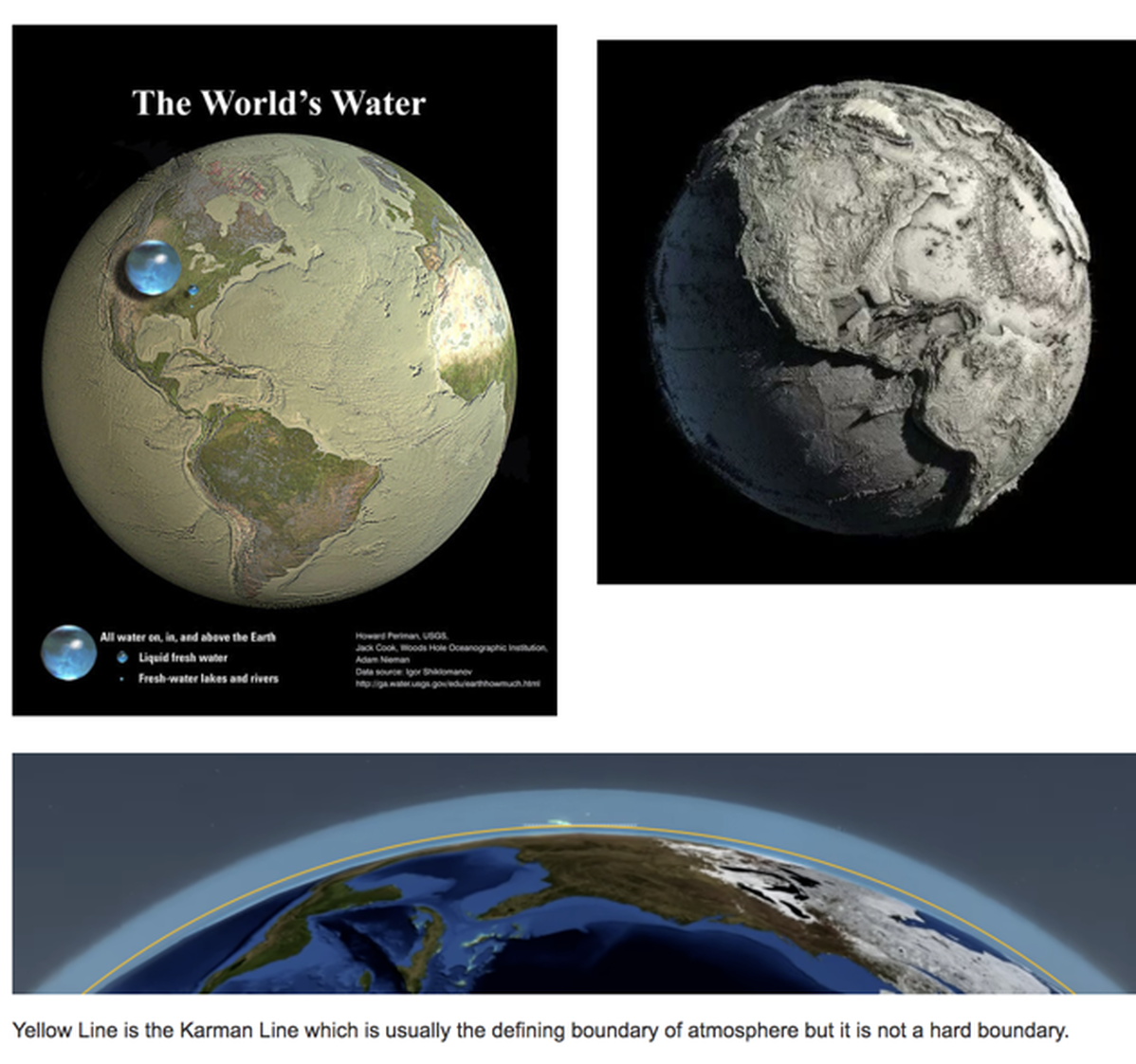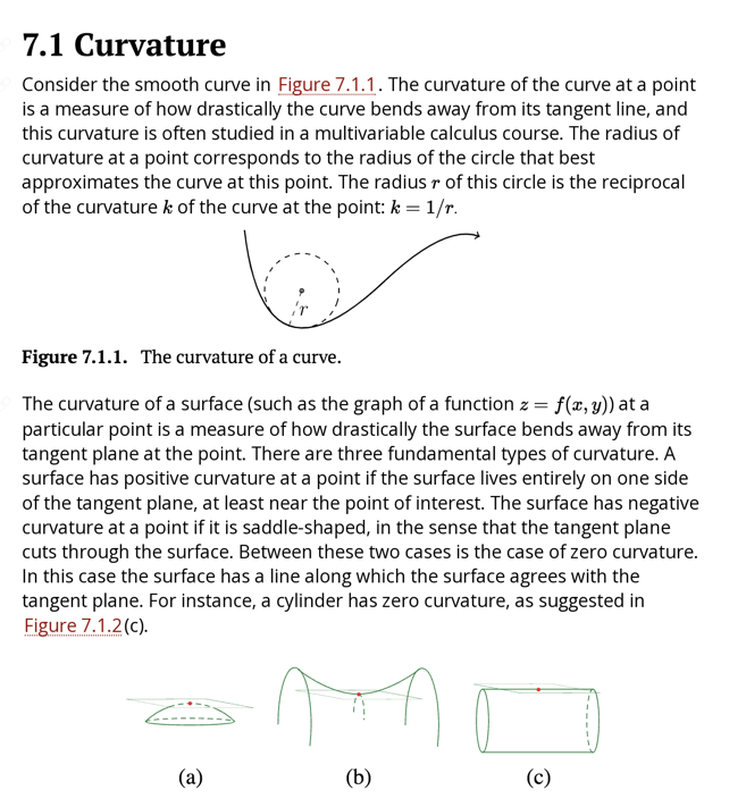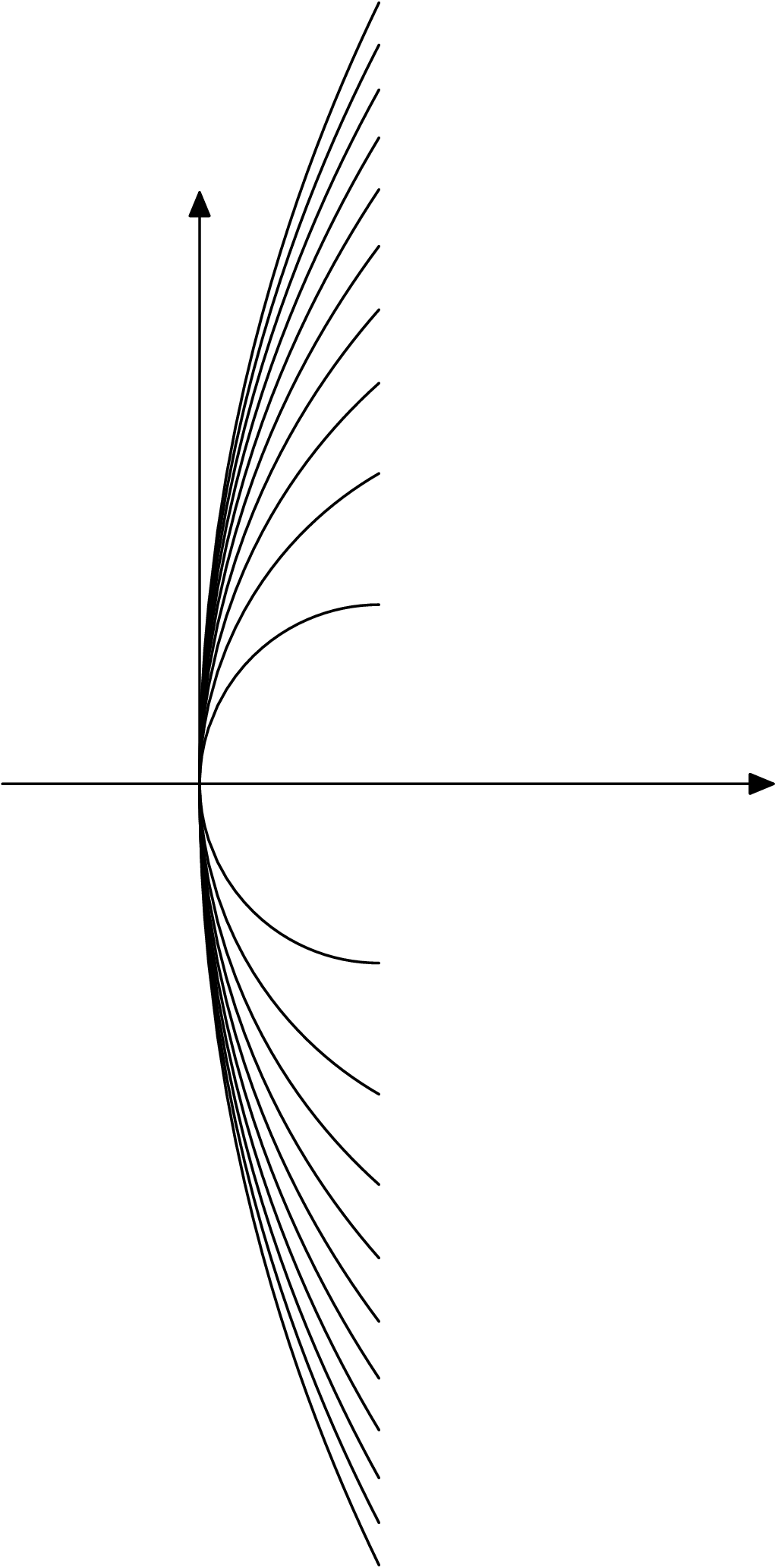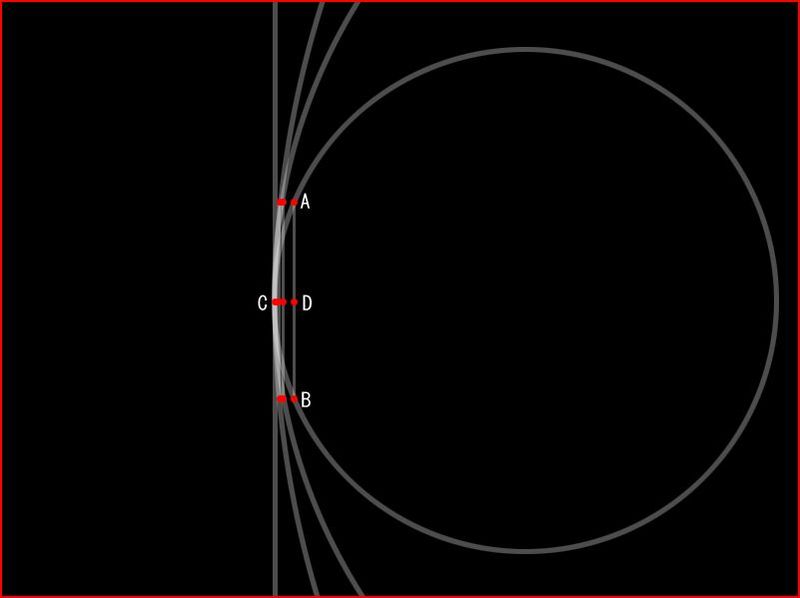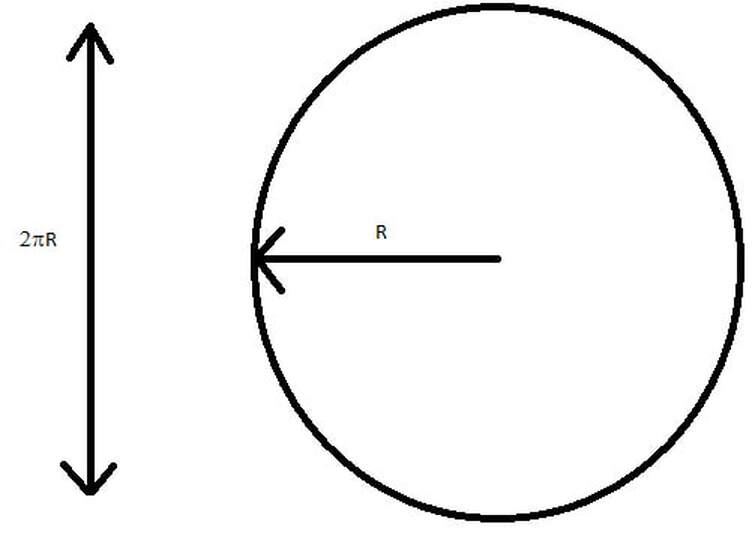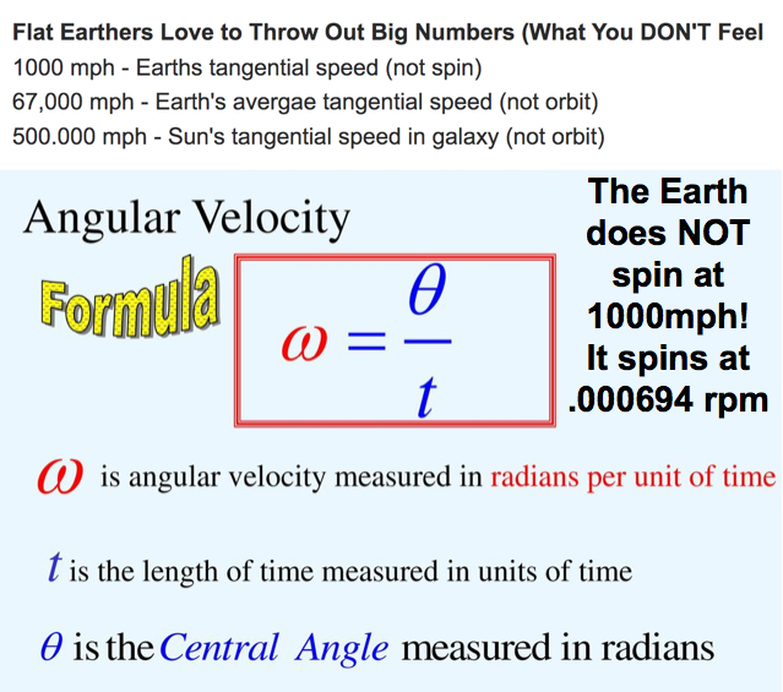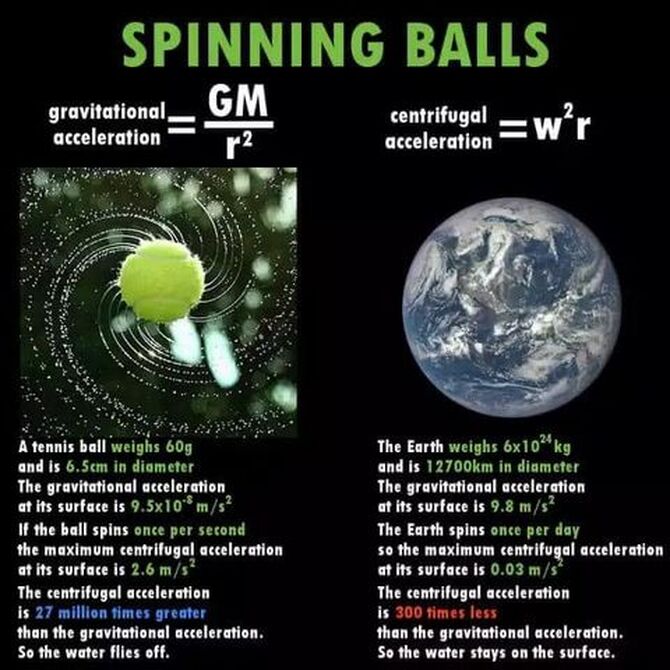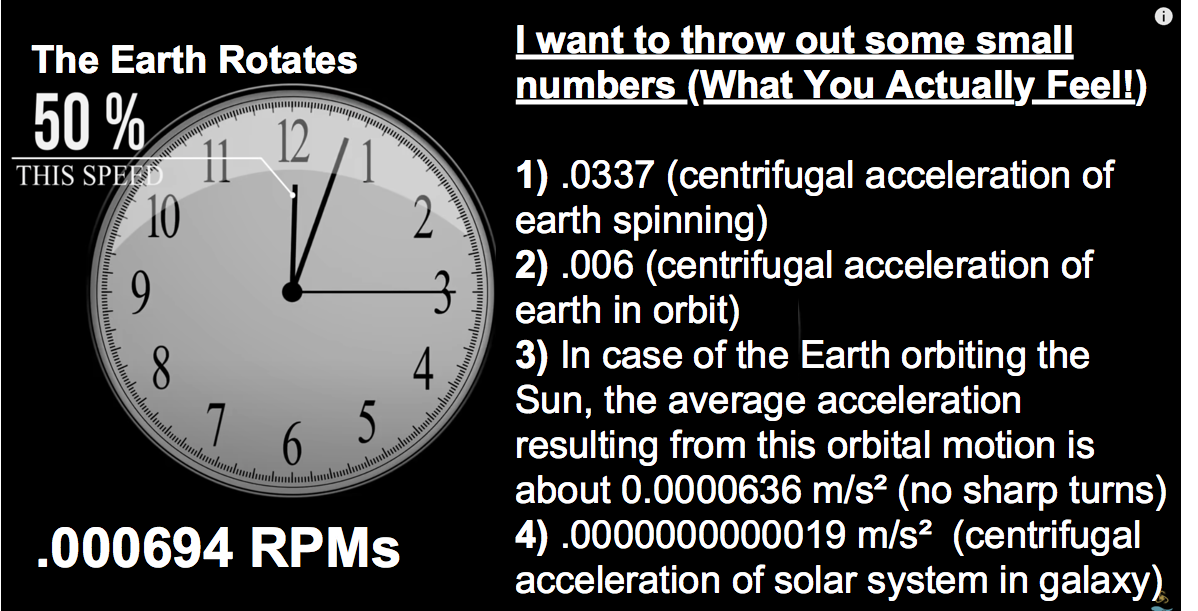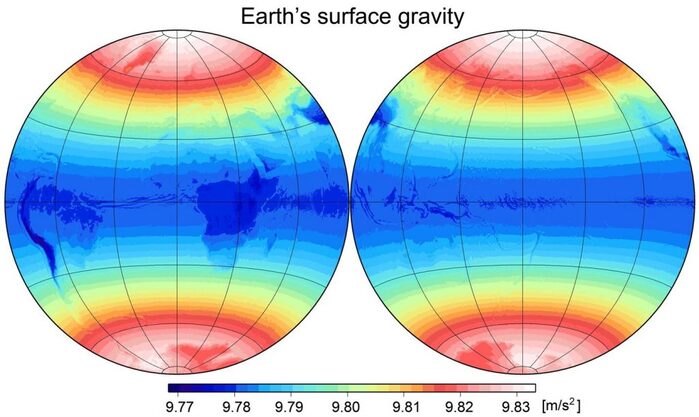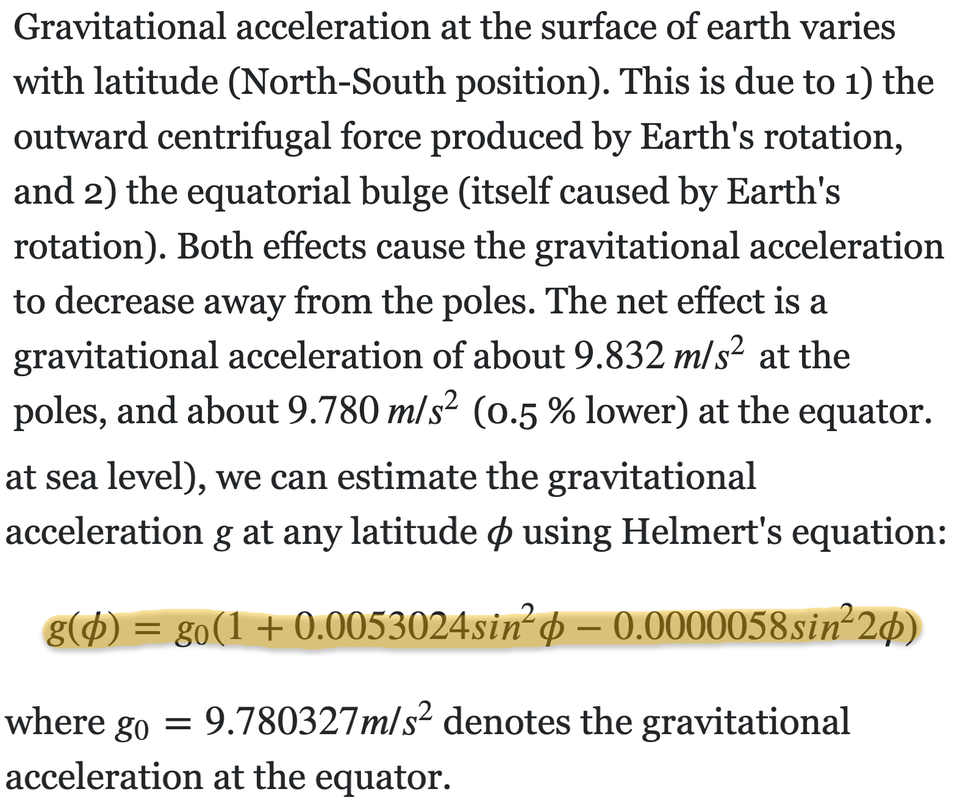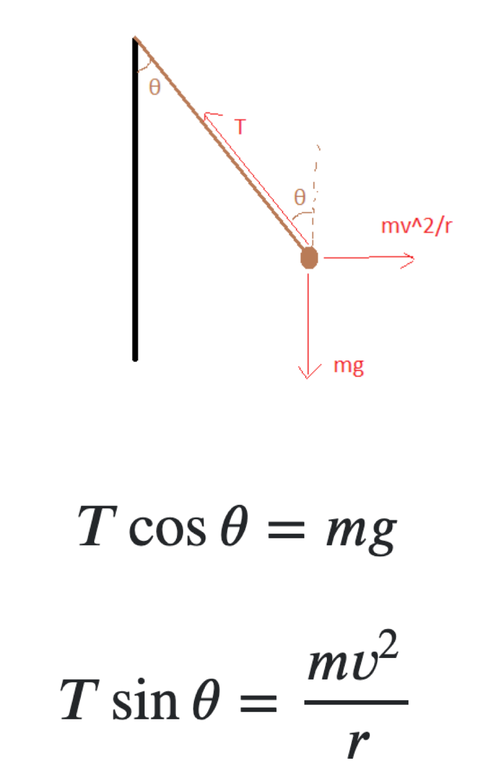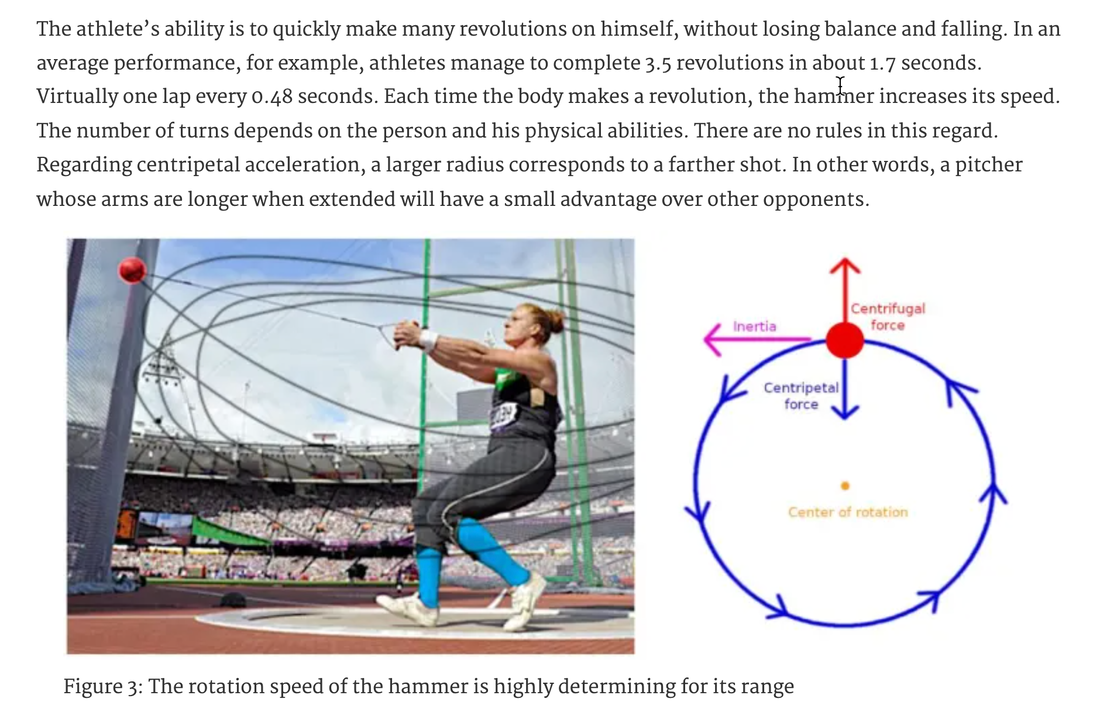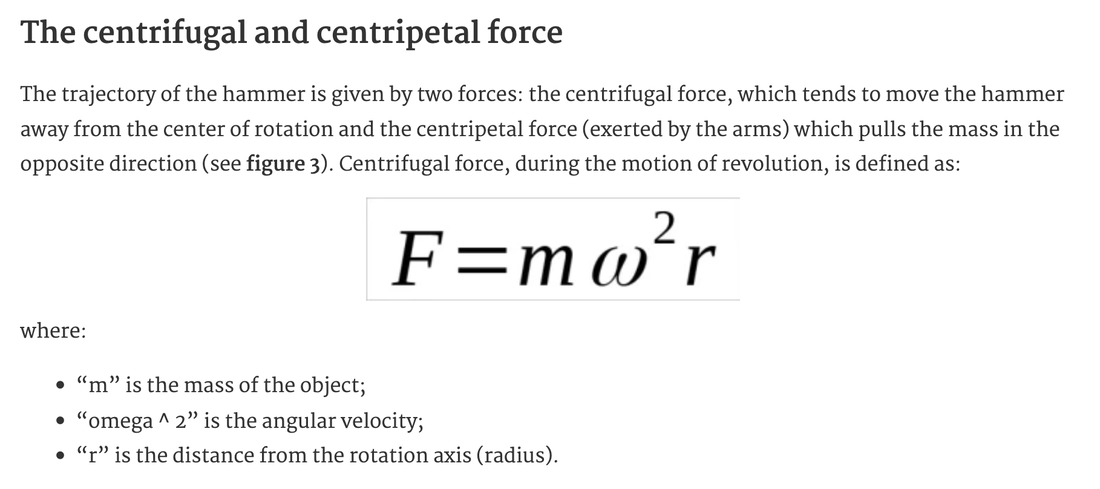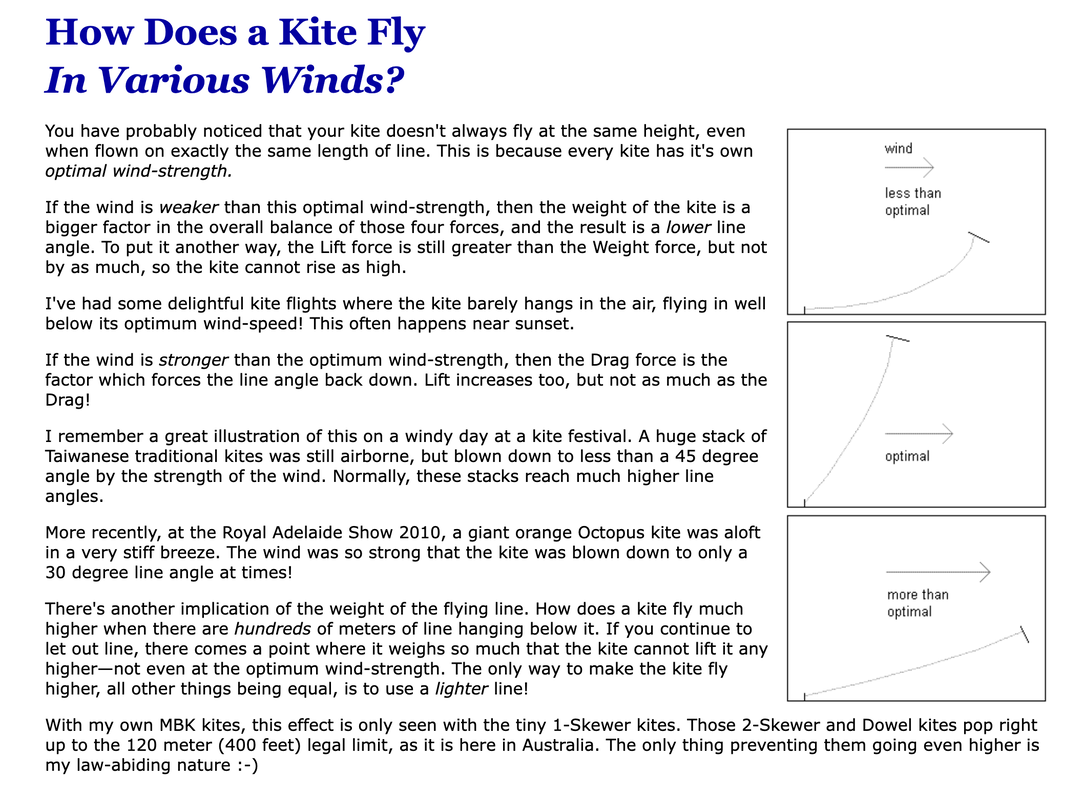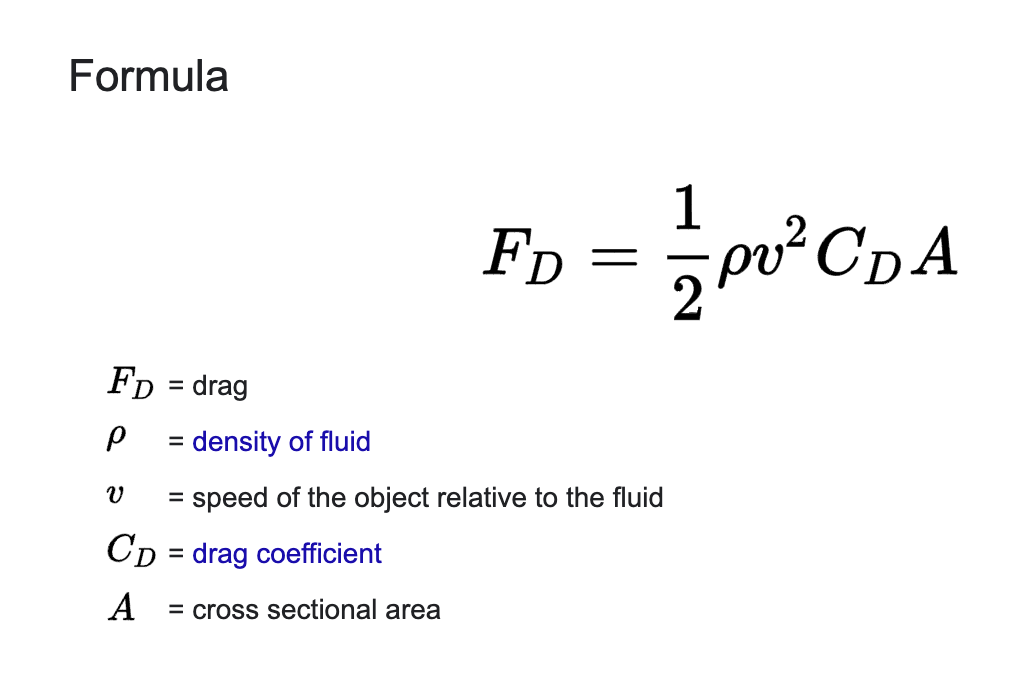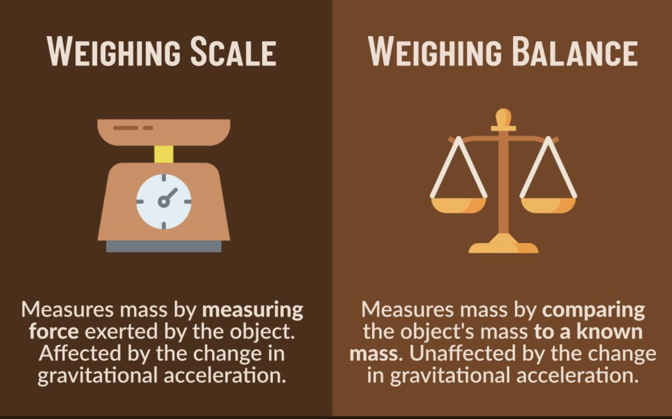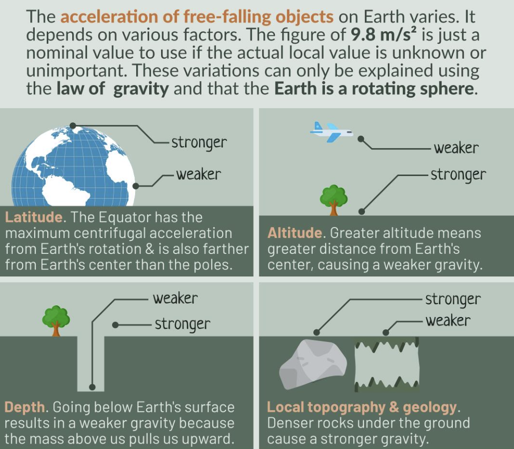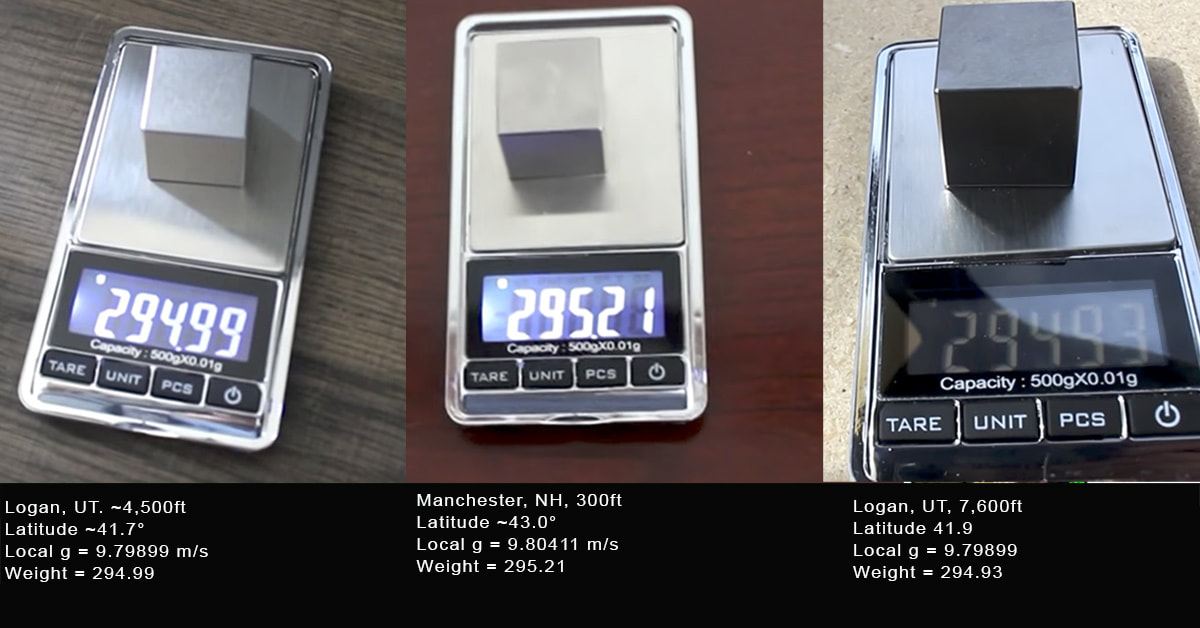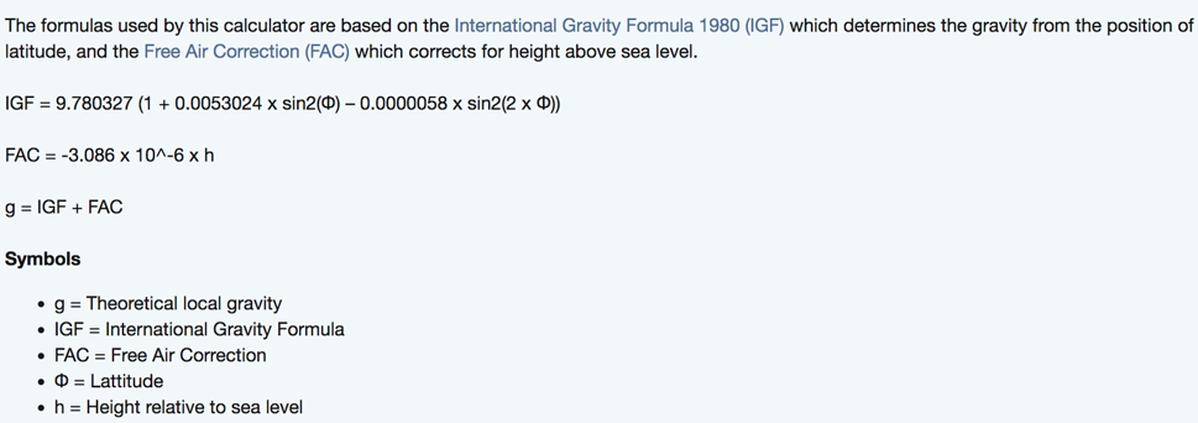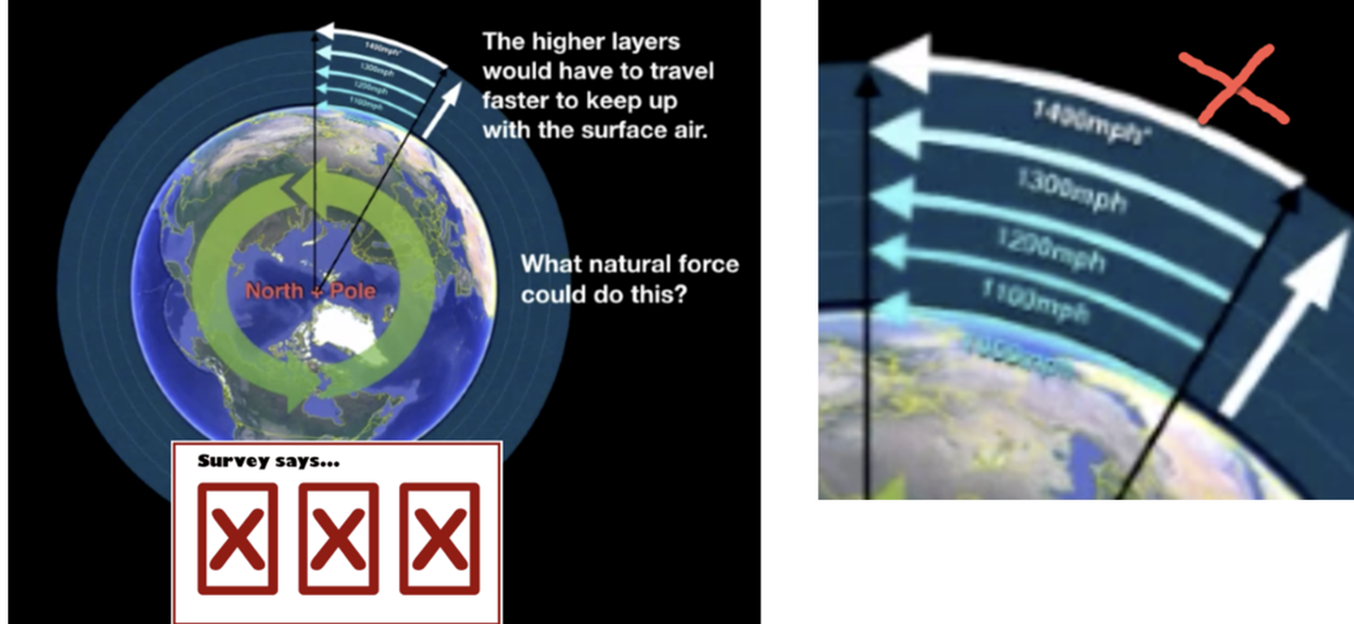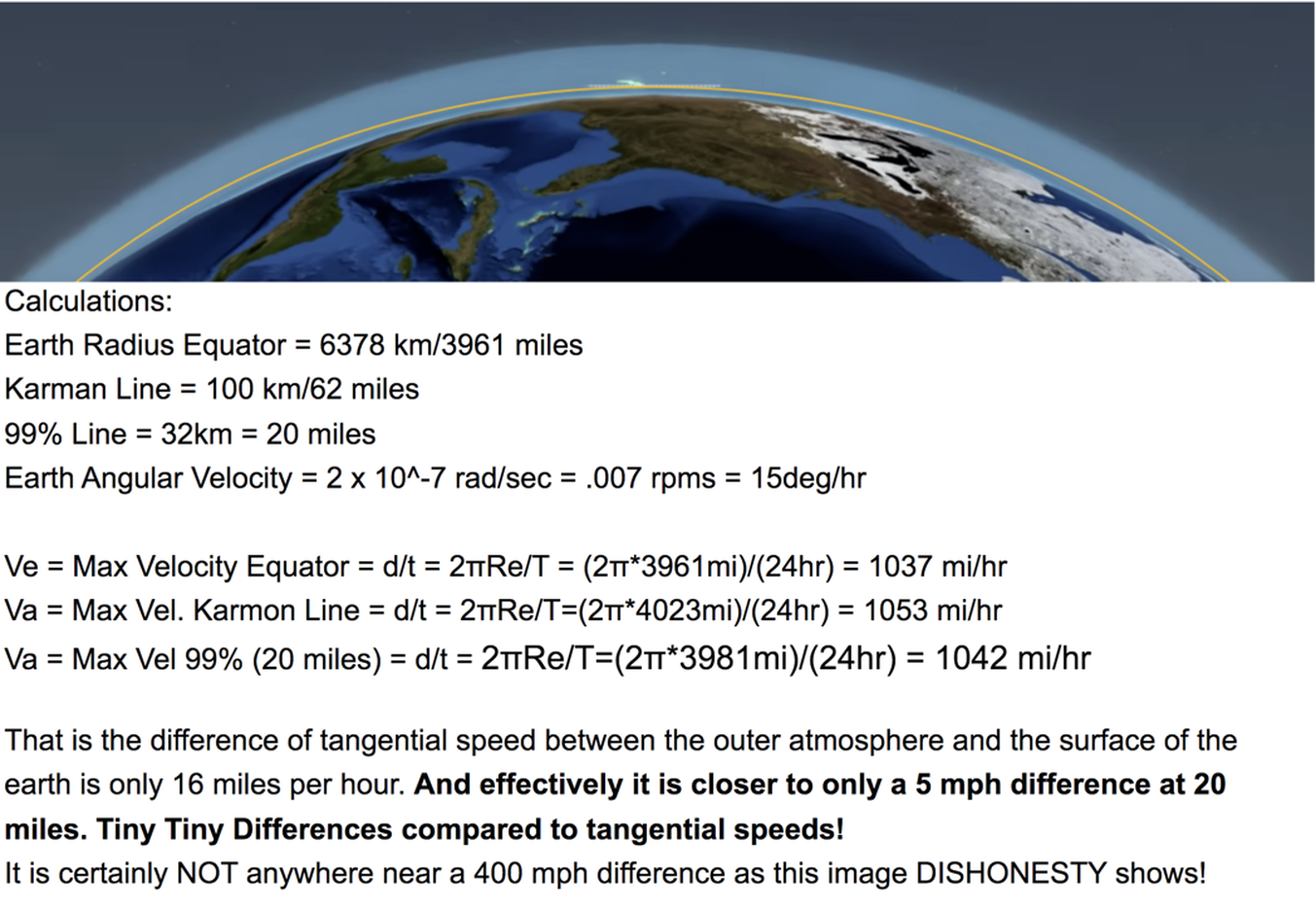Debunking DITRH - Fast Speeds and Small Forces
Slow Rotation of the Earth
Earth is an inertial reference frame
We cannot Measure or Feel Constant Speed
Scale and Curvature MATTERS
Angular Speed is not measured in MPH, radians per sec or RPMS
Fast Speeds and Small Forces
The Two Body Central Force Problem (Gravity vs Centrifugal Force)
Centrifual force exactly as a sphere predicts
Weighing more at equator
Slow spin not fast, so perfectly works (angular speed vs tangential speed)
Earth is an inertial reference frame
We cannot Measure or Feel Constant Speed
Scale and Curvature MATTERS
Angular Speed is not measured in MPH, radians per sec or RPMS
Fast Speeds and Small Forces
The Two Body Central Force Problem (Gravity vs Centrifugal Force)
Centrifual force exactly as a sphere predicts
Weighing more at equator
Slow spin not fast, so perfectly works (angular speed vs tangential speed)

The Earth is accurately approximated as an Inertial Reference Frame
An inertial system is a frame of reference in which the law of inertia - Newton's first law - holds. In such a system which also may be described as an unaccelerated system, a body that is acted on by zero net external force will move with a constant velocity.
**You Cannot Locally Measure Speed. You can measure acceleration. You can measure your speed relative to something else. But there is NO instrument that can say "you are going 20 mph". It's always relative to something else.
In a car, your speedometer measures the rotation of the axle -- it literally counts how many times it goes around per unit time and guesses a speed based on that given the standard tire size for that vehicle. Change your tire size and it will read out incorrectly.
"I have never felt the Earth spinning beneath me at 1,000 mph"
People on the Concorde going 1341 mph could walk up and the down aisles freely because you do not feel speed. They could juggle, pour water, stand, walk, all with no problem. The only time it's a problem is when it isn't smooth because that causes many sharp accelerations in all directions.
Look at this bullet train going 300 km/hr or 170 miles per hour. There is next to zero force because the train is moving constant speed.
An inertial system is a frame of reference in which the law of inertia - Newton's first law - holds. In such a system which also may be described as an unaccelerated system, a body that is acted on by zero net external force will move with a constant velocity.
**You Cannot Locally Measure Speed. You can measure acceleration. You can measure your speed relative to something else. But there is NO instrument that can say "you are going 20 mph". It's always relative to something else.
In a car, your speedometer measures the rotation of the axle -- it literally counts how many times it goes around per unit time and guesses a speed based on that given the standard tire size for that vehicle. Change your tire size and it will read out incorrectly.
"I have never felt the Earth spinning beneath me at 1,000 mph"
People on the Concorde going 1341 mph could walk up and the down aisles freely because you do not feel speed. They could juggle, pour water, stand, walk, all with no problem. The only time it's a problem is when it isn't smooth because that causes many sharp accelerations in all directions.
Look at this bullet train going 300 km/hr or 170 miles per hour. There is next to zero force because the train is moving constant speed.
So how do we know we are moving when traveling at constant speed?
We visually can see it. Ever been to those panoramic movies where you appear as a pilot, on a roller coaster, etc. Or how about when you are at rest in a subway and all you can see is another train moving. Even though you are at rest in these situations it is very convincing that you are moving even when you are not.
Also more tangible things, When we stick our head out of a window in a car, we feel the air rush past us. But this is AIR RESISTANCE ONLY nothing to due with the constant speed.
Also In a car, on a train, or on a plane - what you feel are the little accelerations on the moving vehicle as bumps and twists that give you the sensation of speed but if you were isolated inside a box you couldn't tell you were actually moving.
So how do we know the earth is moving then? Well just a car, you can see objects moving past you and infer you are moving. We look at the sun, moon and stars. And we can measure the rotation with gyroscopes, pendulums and even sensitive scales (centrifugal force).
We visually can see it. Ever been to those panoramic movies where you appear as a pilot, on a roller coaster, etc. Or how about when you are at rest in a subway and all you can see is another train moving. Even though you are at rest in these situations it is very convincing that you are moving even when you are not.
Also more tangible things, When we stick our head out of a window in a car, we feel the air rush past us. But this is AIR RESISTANCE ONLY nothing to due with the constant speed.
Also In a car, on a train, or on a plane - what you feel are the little accelerations on the moving vehicle as bumps and twists that give you the sensation of speed but if you were isolated inside a box you couldn't tell you were actually moving.
So how do we know the earth is moving then? Well just a car, you can see objects moving past you and infer you are moving. We look at the sun, moon and stars. And we can measure the rotation with gyroscopes, pendulums and even sensitive scales (centrifugal force).
Our vestibular system only senses acceleration, not speed. This sets the up and down) across the planet as the vector going to the center of the earth (following the gravitational acceleration g. In free space or zero g we have no sense of up or down. STOP SHARING THOSE STUPID AUSTRALIA UPSIDE DOWN PHOTOS!! Not only do you NOT understand physics, you don't understand biology!
Scale Matters!!!
Most people (especially flat earthers), do not seem to understand how BIG the earth is, which is why it is hard to see the curvature side to side across the horizon even on a commercial jet (but it is there).
To get a sense for the immensity in size, consider that from the deep point in the Mariana Trench to the top of Mount Everest is a total of 12.5 miles (Mariana is 7 miles deep, and Everest is 5.5 miles high).
Now 12.5 miles is about 1.5 thousandth length of the diameter earth which is 7917 miles in diameter. So that means all the water in the oceans is not really that much as shown here AND the smoothness of the earth as a whole is almost as smooth as a billiard ball (based on their listed tolerances). So if you could pick the earth up with your hands, it would be like a billiard ball in smoothness with a tiny film of water over it (very tiny film).
So the world appears to our senses as locally flat, but that is only because the earth is so big. We don't live on a flat earth, we live on a gigantic six sextillion ton, 8000 mile diameter sphere (oblate spheroid) that appears flat locally only because it is so big globally.
Most people (especially flat earthers), do not seem to understand how BIG the earth is, which is why it is hard to see the curvature side to side across the horizon even on a commercial jet (but it is there).
To get a sense for the immensity in size, consider that from the deep point in the Mariana Trench to the top of Mount Everest is a total of 12.5 miles (Mariana is 7 miles deep, and Everest is 5.5 miles high).
Now 12.5 miles is about 1.5 thousandth length of the diameter earth which is 7917 miles in diameter. So that means all the water in the oceans is not really that much as shown here AND the smoothness of the earth as a whole is almost as smooth as a billiard ball (based on their listed tolerances). So if you could pick the earth up with your hands, it would be like a billiard ball in smoothness with a tiny film of water over it (very tiny film).
So the world appears to our senses as locally flat, but that is only because the earth is so big. We don't live on a flat earth, we live on a gigantic six sextillion ton, 8000 mile diameter sphere (oblate spheroid) that appears flat locally only because it is so big globally.
Curvature Matters
Here is the thing, while the tangential speed of the earth is not exactly in a straight line, it will have a little centrifugal acceleration, but it is a very small curvature (huge earth) relative to our scale (small people). Can you see that if you make a circle bigger and bigger and bigger the curve flattens out to approximate a straight line locally!
So because of this, the earths centrifugal acceleration is small because the earth is so large (This is related to the potential energy/Force vs Radius graph I'll show next). Curvature matters. Radius matters. Speed matters less, but is significant for small R. Speed can also be significant for big R, but would have to be ridiculously fast. This is why we have to do science, to see exactly how it all fits together. And when you put it together, it is obvious that the rim velocity of 1040 miles per hour at the equator is not fast enough for a huge sphere of radius 3950 miles. It is hard to see this UNLESS you do the math. Again science matters! Math matters!
Here is the thing, while the tangential speed of the earth is not exactly in a straight line, it will have a little centrifugal acceleration, but it is a very small curvature (huge earth) relative to our scale (small people). Can you see that if you make a circle bigger and bigger and bigger the curve flattens out to approximate a straight line locally!
So because of this, the earths centrifugal acceleration is small because the earth is so large (This is related to the potential energy/Force vs Radius graph I'll show next). Curvature matters. Radius matters. Speed matters less, but is significant for small R. Speed can also be significant for big R, but would have to be ridiculously fast. This is why we have to do science, to see exactly how it all fits together. And when you put it together, it is obvious that the rim velocity of 1040 miles per hour at the equator is not fast enough for a huge sphere of radius 3950 miles. It is hard to see this UNLESS you do the math. Again science matters! Math matters!
You're Just Reciting Numbers and Beliefs"
- DITRH (David Weiss)
- DITRH (David Weiss)
This is How Fast We are Going, Better Hold on Flat Earthers!!!
I am not reciting numbers and Beliefs Dave, I am calculating them and matching them to reality
In fact the known and calculated Centrifugal force is amazing evidence we live on a spinning sphere.
In fact the known and calculated Centrifugal force is amazing evidence we live on a spinning sphere.
Centrifugal Force and Why things Weigh Less At the Equator vs the Poles
As Earth rotates, any object on its surface will feel a centrifugal force directed outward from the center of Earth and generally in the direction of local zenith. This causes Earth to be slightly bulged-out at the equator compared to the poles, which you can see from the difference between its equatorial radius of 6,378.14 km versus its polar radius of 6,356.75 km: a polar flattening difference of 21.4 kilometers. This centrifugal force also has an effect upon the local surface acceleration by reducing it slightly at the equator compared to the poles. At the equator, one would measure a value for ‘g’ that is about 9.78 m/sec2 while at the poles it is about 9.83 m/sec2
As Earth rotates, any object on its surface will feel a centrifugal force directed outward from the center of Earth and generally in the direction of local zenith. This causes Earth to be slightly bulged-out at the equator compared to the poles, which you can see from the difference between its equatorial radius of 6,378.14 km versus its polar radius of 6,356.75 km: a polar flattening difference of 21.4 kilometers. This centrifugal force also has an effect upon the local surface acceleration by reducing it slightly at the equator compared to the poles. At the equator, one would measure a value for ‘g’ that is about 9.78 m/sec2 while at the poles it is about 9.83 m/sec2
So let's define our values:
T = 86164.09054 seconds (time, 1 sidereal day)
ω = 2π/T (angular velocity - simply the angle we turn divided by the time, 2π radians = 360°)
r = 6378137 meters (equatorial radius of Earth)
And finally centrifugal acceleration simply equals the radius times the angular velocity squared.
centrifugal acceleration = rω² = 0.0339... m/s²
So it turns out our centrifugal acceleration is a mere ~0.0339 m/s² which is working against the acceleration of Gravity which was 9.807 m/s²
Gravity is 289 times STRONGER than the centrifugal acceleration.
You can also do this based on the velocity at the equator (1040 mph = 464.9216 m/s)
centrifugal acceleration = v²/r = (464.9216 m/s)²/(6378137 m) = 0.0338895345 m/s²
So we can safely say that you would NOT fly off the Earth because of this rate of rotation.
T = 86164.09054 seconds (time, 1 sidereal day)
ω = 2π/T (angular velocity - simply the angle we turn divided by the time, 2π radians = 360°)
r = 6378137 meters (equatorial radius of Earth)
And finally centrifugal acceleration simply equals the radius times the angular velocity squared.
centrifugal acceleration = rω² = 0.0339... m/s²
So it turns out our centrifugal acceleration is a mere ~0.0339 m/s² which is working against the acceleration of Gravity which was 9.807 m/s²
Gravity is 289 times STRONGER than the centrifugal acceleration.
You can also do this based on the velocity at the equator (1040 mph = 464.9216 m/s)
centrifugal acceleration = v²/r = (464.9216 m/s)²/(6378137 m) = 0.0338895345 m/s²
So we can safely say that you would NOT fly off the Earth because of this rate of rotation.
Chinese bullet train traveling well over 200 mph!
Flat earthers, when are you going to realize spin is NOT measure in miles per hour, it is measure in radians per second, revolutions per minute (rpms), cycles per second, etc.
NOT miles per hour. We do not feel speed, we feel acceleration and the rotation of the earth is twice as slow as the hour hand on your watch. You do realize that right? Once every 24 hours it rotations? That is incredibly slow. Get on a merry go round and have someone spin you a speed 1/2 as slow as the hour hand on your clock?
Now the earth is huge so this translates into large linear speeds at the equation, but linear speed creates no force.
What DOES create a force is the circular motion, which can be measured as the Centrifugal force. This turns out to be only .03 m/s^2 which is 1/300 the acceleration of gravity and literally below our biological perception to feel it!
When are you flat earth believers going to get through your skull that you cannot feel speed or velocity, you only FEEL ACCELERATION (like if this train speeded up or stopped suddenly)!
Flat earthers, when are you going to realize spin is NOT measure in miles per hour, it is measure in radians per second, revolutions per minute (rpms), cycles per second, etc.
NOT miles per hour. We do not feel speed, we feel acceleration and the rotation of the earth is twice as slow as the hour hand on your watch. You do realize that right? Once every 24 hours it rotations? That is incredibly slow. Get on a merry go round and have someone spin you a speed 1/2 as slow as the hour hand on your clock?
Now the earth is huge so this translates into large linear speeds at the equation, but linear speed creates no force.
What DOES create a force is the circular motion, which can be measured as the Centrifugal force. This turns out to be only .03 m/s^2 which is 1/300 the acceleration of gravity and literally below our biological perception to feel it!
When are you flat earth believers going to get through your skull that you cannot feel speed or velocity, you only FEEL ACCELERATION (like if this train speeded up or stopped suddenly)!

How to make a merry go round create the same centrifugal acceleration as earth.
We remember being on the playground merry-go-round and being thrown off that and it wasn't going anywhere NEAR 1040 miles per hour!
So why is our intuition about this so wrong? The answer again lies in understanding inertia.
Let's use the same math from above to work out the acceleration for our little merry-go-round where we are hanging on to the outer edge (about 5 feet or 1.524 meters from our center of rotation as that is a 10 foot merry-go-round) and assume we're a 50 kg kid.
What if we SLOWLY walked the merry-go-around taking, oh say, 42.1282 seconds to go all the way around once (just to pick a random number)?
So let's define our values:
T = 42,1282 seconds
ω = 2π/T (angular velocity - simply the angle we turn divided by the time, 2π radians = 360°)
= .149 radians/sec
r = 1.524 meters
And finally centrifugal acceleration simply equals the radius times the angular velocity squared.
centrifugal acceleration = rω² = (1.524)*(.149)² m/s² = .0339 m/s^2
Hey! That's the SAME acceleration as Earth spinning at 1040 miles per hour! Let's see - radius of 1.524 meters = circumference 9.576 meters around... that's only 1/2 mile per hour -- that's a SLOW walk around.
We remember being on the playground merry-go-round and being thrown off that and it wasn't going anywhere NEAR 1040 miles per hour!
So why is our intuition about this so wrong? The answer again lies in understanding inertia.
Let's use the same math from above to work out the acceleration for our little merry-go-round where we are hanging on to the outer edge (about 5 feet or 1.524 meters from our center of rotation as that is a 10 foot merry-go-round) and assume we're a 50 kg kid.
What if we SLOWLY walked the merry-go-around taking, oh say, 42.1282 seconds to go all the way around once (just to pick a random number)?
So let's define our values:
T = 42,1282 seconds
ω = 2π/T (angular velocity - simply the angle we turn divided by the time, 2π radians = 360°)
= .149 radians/sec
r = 1.524 meters
And finally centrifugal acceleration simply equals the radius times the angular velocity squared.
centrifugal acceleration = rω² = (1.524)*(.149)² m/s² = .0339 m/s^2
Hey! That's the SAME acceleration as Earth spinning at 1040 miles per hour! Let's see - radius of 1.524 meters = circumference 9.576 meters around... that's only 1/2 mile per hour -- that's a SLOW walk around.

The funny thing is you CAN actually get water to stick to a spinning ball.
Spin at a rate to give .03 m/s^2 acceleration. use v^2/r = .03
Apparently, if you have a sufficient force, water CAN cling to things, even if they are spinning. Maybe, since the acceleration of gravity is about 9.807m/s² and the centrifugal acceleration of the Earth is rω² = ~0.0339... m/s² -- the spinning counteracts only a tiny fraction of the centripetal acceleration of gravity so there is no NET outward force. How about that…
You can actually get water to stick to a small ball (smooth stone shown here) due to adhesion forces.
You can do a similar test yourself. And if you want to do it to scale, that equates to almost exactly two drops of a water on a rock the size of a billiard cueball (I actually did the math). The water of the earth is 1/1000 the volume of the whole earth. Shown here is a rock spinning proportionately faster than the earth with proportionately more water. Still no problem! So considered this debunked.
Oh and in zero gravity water aggregates to a sphere. So actually that is its natural shape with no external forces acting!
Spin at a rate to give .03 m/s^2 acceleration. use v^2/r = .03
Apparently, if you have a sufficient force, water CAN cling to things, even if they are spinning. Maybe, since the acceleration of gravity is about 9.807m/s² and the centrifugal acceleration of the Earth is rω² = ~0.0339... m/s² -- the spinning counteracts only a tiny fraction of the centripetal acceleration of gravity so there is no NET outward force. How about that…
You can actually get water to stick to a small ball (smooth stone shown here) due to adhesion forces.
You can do a similar test yourself. And if you want to do it to scale, that equates to almost exactly two drops of a water on a rock the size of a billiard cueball (I actually did the math). The water of the earth is 1/1000 the volume of the whole earth. Shown here is a rock spinning proportionately faster than the earth with proportionately more water. Still no problem! So considered this debunked.
Oh and in zero gravity water aggregates to a sphere. So actually that is its natural shape with no external forces acting!
You're Just Reciting Numbers and Beliefs"
- DITRH (David Weiss)
- DITRH (David Weiss)
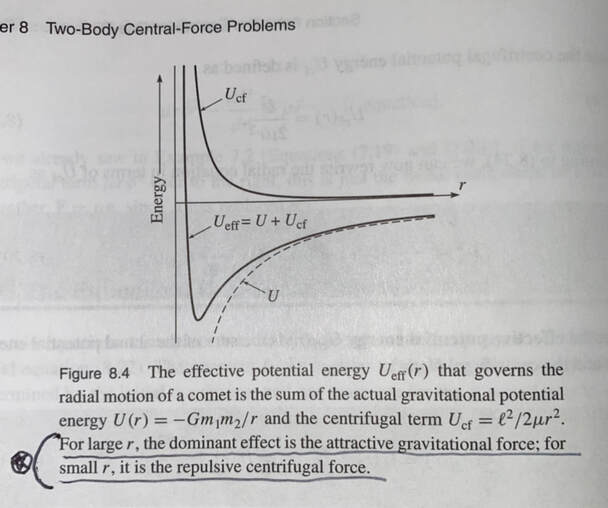
A Deeper Look Rim Velocity vs Acceleration (Which is more important?)
It turns out for small R, the outward centrifugal term dominates (like what a tire technician will see because the radius is small and it is spinning fast and has very little mass). I think this is why the term rim velocity is getting used, but you cannot compare a fast spinning tire to a slow rotating earth, even if the earth has high tangential speeds (or rim velocity). For a large R, the gravitational term dominations (or whatever the inward centripetal force is operating in the rotating system).
Here is where science matters. From the graph of net Force vs Radius (R), when R is LARGE like the earth, the the inward force of Gravity dominates because the earth is 6 sextillion tons and the radius R is huge (3950 miles). When R is small , like a tire, the centrifugal force dominates and things would spin off (water, etc).
So you can see why science and quantification matters, which flat earthers seem to ignore or avoid. You can't just say rim velocity while ignoring that the acceleration due to this velocity is minuscule for large R.
==> key point to debunk flat earth proponents:
So to "spin you off", the centrifugal force will have to be GREATER than gravity. If you lived at the equator which is the place you will "spin off" first, the earth's centrifugal acceleration has to be greater than 9.8 meters per second^2. To calculate the speed needed with the earth's known radius, use the equation for centrifugal acceleration v^2/R = 9.8, solve for v and you get a rim velocity of 17,689.69 miles per hour!
It turns out for small R, the outward centrifugal term dominates (like what a tire technician will see because the radius is small and it is spinning fast and has very little mass). I think this is why the term rim velocity is getting used, but you cannot compare a fast spinning tire to a slow rotating earth, even if the earth has high tangential speeds (or rim velocity). For a large R, the gravitational term dominations (or whatever the inward centripetal force is operating in the rotating system).
Here is where science matters. From the graph of net Force vs Radius (R), when R is LARGE like the earth, the the inward force of Gravity dominates because the earth is 6 sextillion tons and the radius R is huge (3950 miles). When R is small , like a tire, the centrifugal force dominates and things would spin off (water, etc).
So you can see why science and quantification matters, which flat earthers seem to ignore or avoid. You can't just say rim velocity while ignoring that the acceleration due to this velocity is minuscule for large R.
==> key point to debunk flat earth proponents:
So to "spin you off", the centrifugal force will have to be GREATER than gravity. If you lived at the equator which is the place you will "spin off" first, the earth's centrifugal acceleration has to be greater than 9.8 meters per second^2. To calculate the speed needed with the earth's known radius, use the equation for centrifugal acceleration v^2/R = 9.8, solve for v and you get a rim velocity of 17,689.69 miles per hour!
More Flat Earth Misinformation - Maybe put atmosphere Stuff Here (Gravity and Rotation Misunderstandings
Flat earthers like to use images like (two on bottom row) to try to convince people that the atmosphere cannot possibly rotate with the earth because the outer atmosphere would have to be going faster (and gravity doesn't exist..lol). The problem is their scale and numbers they use for speed are totally fabricated!
While that is true the upper atmosphere is traveling faster, gravity and drag forces keep it moving with the rotating earth just fine.
The TANGENTIAL velocity would be a little greater, but when you do the calculations it is only 16 MILES PER HOUR faster in the upper atmosphere than the surface at the equator (where it is maximum). Flat earthers' LITERALLY made these numbers up! And it is easy to calculate these numbers.
Note: Karmon line is the well accepted boundary between the atmosphere and space but it is not a hard boundary, just a convenience for calculations.
Also worth noting is the earth's atmosphere is like a thin bubble around the earth compared to whole size of our planet. This image below (Top Row) shows with the thin yellow line the upper atmosphere to scale with curvature. Flat earthers' images and numbers are just wrong period! They make earth too small, the atmosphere too large and the speeds way too high! They just don't understand the scale of things!
Flat earthers like to use images like (two on bottom row) to try to convince people that the atmosphere cannot possibly rotate with the earth because the outer atmosphere would have to be going faster (and gravity doesn't exist..lol). The problem is their scale and numbers they use for speed are totally fabricated!
While that is true the upper atmosphere is traveling faster, gravity and drag forces keep it moving with the rotating earth just fine.
The TANGENTIAL velocity would be a little greater, but when you do the calculations it is only 16 MILES PER HOUR faster in the upper atmosphere than the surface at the equator (where it is maximum). Flat earthers' LITERALLY made these numbers up! And it is easy to calculate these numbers.
Note: Karmon line is the well accepted boundary between the atmosphere and space but it is not a hard boundary, just a convenience for calculations.
Also worth noting is the earth's atmosphere is like a thin bubble around the earth compared to whole size of our planet. This image below (Top Row) shows with the thin yellow line the upper atmosphere to scale with curvature. Flat earthers' images and numbers are just wrong period! They make earth too small, the atmosphere too large and the speeds way too high! They just don't understand the scale of things!
It's well-documented fluid dynamics that causes the air to mostly rotate with the Earth. Deviations from matching that rotation are called Wind. Same goes all the way up. And you failed to calculate how much faster it would be spinning and show that this effect-size cannot be accounted for with existing fluid dynamic models.
Once again, air molecules also do not lose their existing rotational momentum.
They are therefore subject freely to fluid dynamics -- pressure changes caused by heating and cooling, and all the rest. Having wind going different directions on a rotating Earth is not a violation of any physical law.
**Atmosphere spinning**
This is the danger of conflating angular motions with linear speeds. The atmosphere aloft would be moving at the same angular rate as the atmosphere below it -- any deviation from this would be Wind and only that would cause drift.
Since the atmosphere becomes less dense with altitude (thanks to Gravity -- on Flat Earth shouldn't all air be the same 'density'?) fluid dynamics has less impact and pressure differentials can become more extreme, creating the Jet Stream, atmospheric heating from solar radiation produces the large scale Polar, Ferrel, and Hadley circulation cells, and the Coriolis force all play roles.
Once again, air molecules also do not lose their existing rotational momentum.
They are therefore subject freely to fluid dynamics -- pressure changes caused by heating and cooling, and all the rest. Having wind going different directions on a rotating Earth is not a violation of any physical law.
**Atmosphere spinning**
This is the danger of conflating angular motions with linear speeds. The atmosphere aloft would be moving at the same angular rate as the atmosphere below it -- any deviation from this would be Wind and only that would cause drift.
Since the atmosphere becomes less dense with altitude (thanks to Gravity -- on Flat Earth shouldn't all air be the same 'density'?) fluid dynamics has less impact and pressure differentials can become more extreme, creating the Jet Stream, atmospheric heating from solar radiation produces the large scale Polar, Ferrel, and Hadley circulation cells, and the Coriolis force all play roles.
Helicopter Paradox
If the earth was spinning, flying vehicles could hover and wait for their destination to come to them.
Actually a fairly interesting one - I've heard it before from sincere questioners. Suppose, for a moment, that the question is a fair one.
What would this mean? It would mean that the wind isn't rotating with the earth. The speed they mention is ``over 1000 mph''. If the air isn't rotating with the earth, then it follows that the wind speed is always over 1000 mph (wind is relative motion between you and the air). It's not, so we deduce that the air rotates with the earth.
So, how much force would that generate on a vehicle flying? The formula for the drag force due to the air.
Flat earthers say that gravity would have to magically and inexplicably drags the atmosphere in perfect synchronization with the earth.
It is not really magically, it's called drag (drag is sort of like `friction' but with fluids instead of solids).
They also claim that rain, fireworks, etc. would behave differently if both the earth and the atmosphere were spinning. This is simply false; they wouldn't. Let's go to Wikipedia/Centrifugal Force. We find the forces for rotating frames.
If the earth was spinning, flying vehicles could hover and wait for their destination to come to them.
Actually a fairly interesting one - I've heard it before from sincere questioners. Suppose, for a moment, that the question is a fair one.
What would this mean? It would mean that the wind isn't rotating with the earth. The speed they mention is ``over 1000 mph''. If the air isn't rotating with the earth, then it follows that the wind speed is always over 1000 mph (wind is relative motion between you and the air). It's not, so we deduce that the air rotates with the earth.
So, how much force would that generate on a vehicle flying? The formula for the drag force due to the air.
Flat earthers say that gravity would have to magically and inexplicably drags the atmosphere in perfect synchronization with the earth.
It is not really magically, it's called drag (drag is sort of like `friction' but with fluids instead of solids).
They also claim that rain, fireworks, etc. would behave differently if both the earth and the atmosphere were spinning. This is simply false; they wouldn't. Let's go to Wikipedia/Centrifugal Force. We find the forces for rotating frames.
The first term is the Euler force, which is about a spinning system that is spinning at a changing rate. For the earth, which is roughly spinning at a constant speed, this contribution is zero.
The second term is the Coriolis force, which depends on the rate of spinning and the velocity of the object. You probably won't be surprised to learn that the earth spins very slowly; only 15 degrees per hour (twice as slow as the hour hand on your clock). This force is VERY SMALL! It would deflect the tennis ball on a Rafael Nadal serve less than a millimeter.
Finally, there's the centrifugal force. It's cancelled by gravity; after all, the frame is rotating because of gravity. Not exactly; in fact, gravity pulls you down which causes friction with the rotating surface which is what attaches you to the rotating frame.
Anyway, this 'layer has friction with layer' type of explanation works sort of nicely. The viscosity is a material property that we can use in a few specific models to properly calculate this sort of stuff.
The earth has been spinning for a few billion years. The entire atmosphere moves with it. There's no magic, just some physics.
However, the air isn't uniform. We already considered this for clouds; there's differences in density, amount of moisture, temperature and so on. Pressure differences also happen - they are related to the local weather.
The earth's friction to the air and the air's viscosity are one part of the story. If we look at smaller scales, we need more details. All of these details are significant on small scales, and cause things like wind, clouds, and so on - what is called weather.
The second term is the Coriolis force, which depends on the rate of spinning and the velocity of the object. You probably won't be surprised to learn that the earth spins very slowly; only 15 degrees per hour (twice as slow as the hour hand on your clock). This force is VERY SMALL! It would deflect the tennis ball on a Rafael Nadal serve less than a millimeter.
Finally, there's the centrifugal force. It's cancelled by gravity; after all, the frame is rotating because of gravity. Not exactly; in fact, gravity pulls you down which causes friction with the rotating surface which is what attaches you to the rotating frame.
Anyway, this 'layer has friction with layer' type of explanation works sort of nicely. The viscosity is a material property that we can use in a few specific models to properly calculate this sort of stuff.
The earth has been spinning for a few billion years. The entire atmosphere moves with it. There's no magic, just some physics.
However, the air isn't uniform. We already considered this for clouds; there's differences in density, amount of moisture, temperature and so on. Pressure differences also happen - they are related to the local weather.
The earth's friction to the air and the air's viscosity are one part of the story. If we look at smaller scales, we need more details. All of these details are significant on small scales, and cause things like wind, clouds, and so on - what is called weather.

